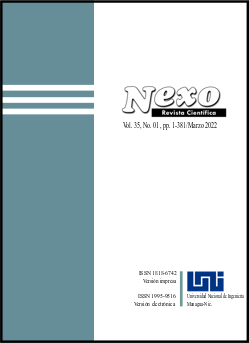Study of transformation of complex business associations to ecosystems
DOI:
https://doi.org/10.5377/nexo.v35i01.13939Keywords:
co-evolution, entrepreneurial associations, entrepreneurship ecosystem, IT platform, startupsAbstract
The new reality, determined, on the one hand, by the complexity and non-linearity of socio-economic relations and, on the other hand, by the development of digitalization and the expanding possibilities of integration of various processes, requires new approaches to the study of entrepreneurial forms and associations. Network and cluster scientific methodologies were quite revolutionary at the time but remain quite productive. The authors of the article investigate the evolution of views and discuss the feasibility of applying an ecosystem approach to the study of large business structures such as "group of companies". The logic is as follows: the larger the business association, the more it is embedded in the environment, formally (legally) located behind the contour of this structure. Therewith, it is important to take into account the current trends in the development of the ecosystem approach, the specifics and structure of the group of companies. The article attempts, based on a combination of inductive and deductive methods, to determine the prospects for possible research directions of Russian groups of companies based on an ecosystem approach.
Downloads
962
Downloads
Published
How to Cite
Issue
Section
License
Copyright (c) 2022 Universidad Nacional de Ingeniería

This work is licensed under a Creative Commons Attribution 4.0 International License.
The authors who publish in Nexo Scientific Journal agree to the following terms:
- Authors retain the copyright and grant the journal the right of the first publication under the license Creative Commons Attribution License, which allows others to share the work with a recognition of the authorship of the work and the initial publication in Nexo Scientific Journal.
- Authors may separately establish additional agreements for the non-exclusive distribution of the version of the work published in the journal (for example, in an institutional repository or a book), with the recognition of the initial publication in Nexo Scientific Journal.
- Authors are allowed and encouraged to disseminate their works electronically (for example, in institutional repositories or in their own website) before and during the submission process, as it can lead to productive exchanges, as well as earlier and greater citation of published works.










